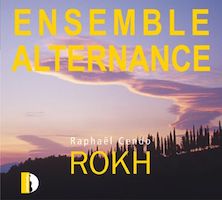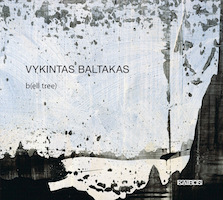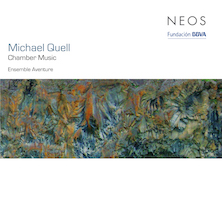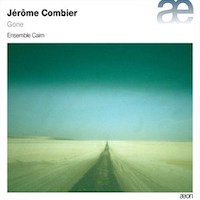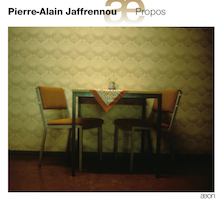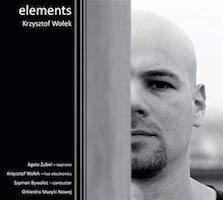Ramble with Gigantic Mythical Bird
|
Grant Chu Covell [October 2019.]
Raphaël CENDO: Rokh (2011-12). Ensemble Alternance: Jean-Luc Menet (fl), Jacques Ghestem (vln), Frédéric Baldassare (vlc), Jean-Marie Cottet (pno). Stradivarius STR 33926 (1 CD) (http://www.stradivarius.it/). It’s just a quartet (bass flute, violin, cello, piano), but this group unleashes mysterious fury. (Rokh, or Roc, is a gigantic mythical bird found in 1001 Nights.) The piano is prepared, creating a jarring, nearly electronic frenzied percussion battery. Low breath tones from the flute combine with scraping and tapping strings. The three parts (Rokh 1, Rokh 2, Rokh 3) blur together. This music does not reassure or suggest that the world is beautiful, unless we relish decay. We are helpless to stop a piano from skidding down a flight of stairs, taking the universe along with it.
Vykintas BALTAKAS: (co)ro(na) (2005)1; Pasaka (1995-97; ver. for piano)2; Sinfonia (1996)3; b(ell tree) (2007)4; Ri (2007)5; Poussla (2002; rev. 2006)6; Pasaka (1995-97; ver. for piano and electronics)7; Saxordionphonics (2013)8. Tokyo Sinfonietta1, Benjamin Kobler2,7 (pno), LENsemble3, Chordos Quartet4, Rita Balta5 (sop), SWR Sinfonieorchester Baden-Baden und Freiburg6, Marcus Weiss8 (sax), Teodoro Anzellotti8 (accordion), WDR Sinfonieorchester Köln8, Yasuaki Itakura1, Vykintas Baltakas3, Johannes Kalitzke6, Emilio Pomàrico8 (cond.). Kairos 0015004KAI (1 CD) (http://www.kairos-music.com/). Born in Lithuania but transplanted to Germany, Baltakas (b. 1972) studied composition with Rihm and conducting with Eötvös. Baltakas’ music is finely drawn but brazen. In the three-and-a-half-minute Sinfonia, a jaunty tune becomes disfigured through repetition and erasing. It’s a scraggly village band (e-flat clarinet, piccolo trumpet, a pair each of saxophones and trombones, a tuba and percussion) post hangover. Stuttering loops imitate tape manipulation techniques which appear explicitly in Ri (soprano and tape) and in one of two offered versions of Pasaka (piano with or without electronics). Pasaka asks the pianist to recite a Lithuanian text derived from Hindu mythology. The athletic piano material obscures the story. (co)ro(na) kicks off the party with high-range twittering and unexpected pauses. A stumbling piano provides glue, and an extended slow passage of quiet trills feels like we got off at the wrong stop. b(ell tree) is a fragile string quartet whose opening materializes from the stratosphere like timid insects. The foursome’s tessitura gradually descends but not terribly far: The conclusion quivers around the tuning A. Perhaps these gestures, or non-gestures, can be traced back to Sciarrino. In Poussla, the orchestra swarms around a central cluster of oboe, clarinet, saxophone, violin, accordion, piano and tuba. Sometimes this group pops up as soloist(s), more often the orchestra’s pulsing overwhelms. Baltakas’ note suggests physically swinging, repeated motion which goes nowhere despite immense kinetic energy. Solo saxophone and accordion reappear in Saxordionphonics. The earlier pieces interest far more.
Michael QUELL: Ekstare (1988/90)1; temps et couleurs I (1995)2; Streichtrio – le son d’un monde secret et couvert (1994)3; anisotropie – (vier) (aggregat) – zustände (2001)4; Achronon (2008/09)5; Anamorphosis II (-Polymorphia) (2002/03)6. Ensemble Aventure: Martina Roth1,2,6 (fl), Alexander Ott1,6 (ob), Walter Ifrim6 (clar), Pascal Pons6 (perc), Akiko Okabe4,6 (pno), Friedemann Treiber1,3,6 (vln), Jessica Rona1,3,6 (vla), Beverley Ellis1,3,6 (vlc), Jürgen Ruck2,5 (guit), Olivia Steimel5 (acc), Alistair Zaldua6 (cond.). NEOS 11046 (1 CD) (http://www.neos-music.com/). Modern music can be so exciting, with squawking oboe, grinding cello, and a lyric flute answering a virtuosic violin! Ought we approach Quell’s music with irony, because these gestures are so commonplace, their novelty diluted? Actually, Quell is a master of timing, dishing disarming languidness ahead of unbridled ferocity, splicing in an unexpected pause, or breaking off an argument. A study of philosophy has informed Quell’s musical thinking; however, discard that background and the indigestible program notes. Ensemble Aventure delivers everything very well, so there is plenty of substance. Ekstare means to stand outside. During raucous proceedings, the quintet (flute, oboe, violin, viola and cello) shouts as if their agitated playing requires an extra-musical release. The work tapers at the middle before ratcheting back up. Because of the spiky dissonance, and the flute-guitar pairing, temps et couleurs I enacts a vivacious Marteau outtake, although with more microtones than Boulez would ever have envisioned. Across a mere nine minutes, the String Trio clatters and scrapes, punctuating microtonal clouds with eruptions before fitfully dissolving. The four piano pieces in anisotropie develop material according to patterns observed in physics. Achronon maximizes an accordion and guitar duo, slowing down in the process. Anamorphosis II considers instrumental variety as a rabid shredding of Webern’s Concerto.
Jérôme COMBIER: Dawnlight (2015); Noir gris (2007); Dog eat dog (2014); Terra d’ombra (2012-15); Gone (2010). Ensemble Cairn: Cédric Jullion (fl), Ayumi Mori (clar), Caroline Cren (pno), Christelle Séry (guit), Aurélie Saraf (hrp), Naaman Sluchin, Saori Furukawa (vln), Cécile Brossard (vla), Frédéric Baldassare (vlc). Aeon AECD 1651 (1 CD) (http://www.outhere-music.com/). A handful of fresh recipes using ingredients taken from the post-Lachenmann larder. Electronics add a caustic sheen, but shrieks and growls are benignly paced. Despite Ensemble Cairn’s command, I didn’t get a sense that Combier understands timing or drama. The best item is a cello and guitar duo, Dog eat dog, a five-minute moment surveying similarities and differences. Noir gris is for string trio, and Terra d’ombra is for piano, harp and cello. Two long pieces with electronics frame this collection, Dawnlight (flute, piano, violin, cello) and Gone (clarinet, piano, violin, viola, cello) do not lift off despite intriguing sparks and immense potential. It would seem that the chosen tempos do not work to Combier’s advantage. Dreariness can’t possibly be the goal. The notes insinuate varied references (Inuit throat signing, Beckett texts, a Wim Winders film, a canvas painted by Giuseppe Penone, etc.), but the results are mundane.
Pierre-Alain JAFFRENNOU: Chronorythmie (2008)1; Du ciel et de la terre (1997)2; For Three (2006)3; Propos (1998-2001)4. Brigitte Peyré4 (sop), Isabel Soccoja4 (m-sop), Ivo Nilsson3 (trb), Benjamin Carat3 (vlc), Jonny Axelsson3 (perc), Solistes de l’Orchestre National de Lyon2, Nouvel Ensemble Moderne1, Ensemble Orchestral Contemporain1, Daniel Kawka2,4, Lorraine Vaillancourt1 (cond.). Aeon AECD 1112 (1 CD) (http://www.outhere-music.com/). A mixed bag from a composer who worked with Pierre Schaeffer and later established the artists’ association GRAME with James Giroudon. Unexpected vividness appears in For Three, cleverly uniting cello, trombone, percussion and electronics. The smaller forces permit deeper investigations, whereas the larger ensembles incline to spectralist whiplash. Chronorythmie belches a controlled increase of wasted heroics. Scored for two ensembles plus electronics, it’s well-built and delivered with brio, however its mid-century modernist gestures rant without results. There are exciting moments, but just what do the electronics achieve other than formulating phantoms at the edges? Du ciel et de la terre is a two-part string sextet bolstered with electronics (including spoken voice). Catharsis never arrives despite visits to intriguing locales. Propos requires soprano and mezzo voices supported with seven instruments. The bubbling female pair plus robust ensemble commentary align the work with Aperghis’ musical theatre. I find Jaffrennou’s earlier work more invigorating. GRAME: Musiques pour cordes (Forlane UCD 16664) offers a clever Suite for cello and tape (1986) and a multi-sectional Paysages de lunes (1989) for string orchestra, timpani and electronics. I suspect the homogeneous textures warranted profounder development, although the road maps for Chronorythmie and Paysages de lunes sound similar.
Krzysztof WOŁEK: Eppur si muove (2006); Bend (2003; rev. 2010); Elements (2009). Agata Zubel (sop), Krzysztof Wołek (electronics), Orkiestra Muzyki Nowej, Szymon Bywalec (cond.). Accord ACD 188-2 (1 CD) (http://www.cdaccord.com.pl/). It reassures to see a composer start in one place and end elsewhere. Eppur si muove (And yet it moves) is a reasonable opening gambit. Texts are from Copernicus and Galileo, but the words’ weight (how the planets move, how Galileo backtracked) is not mirrored in the music’s economy or urgency. Within Eppur si muove’s wind timbres we may discern that Wołek studied with Andriessen (and perhaps learned a thing or two from Berio). We can also hear Boulez’s precision palette, which figures more prominently in Elements. Pitched electronic flourishes suggest Babbitt’s tapes. Wołek emerges more distinctively in Bend, wherein a predominantly unison ensemble explores massing and subtle detuning as material accelerates into a dance before dissolving. The keen focus continues in Elements with four distinct electroacoustic interludes. I hear a progression in this program, even though Bend is both earliest and latest. It may be that smaller ensembles permit focused elaboration of material.
[More Grant Chu Covell, Rambles]
[Previous Article:
Used Bin Troll Tweets MM.]
[Next Article:
EA Bucket 28.]
|
